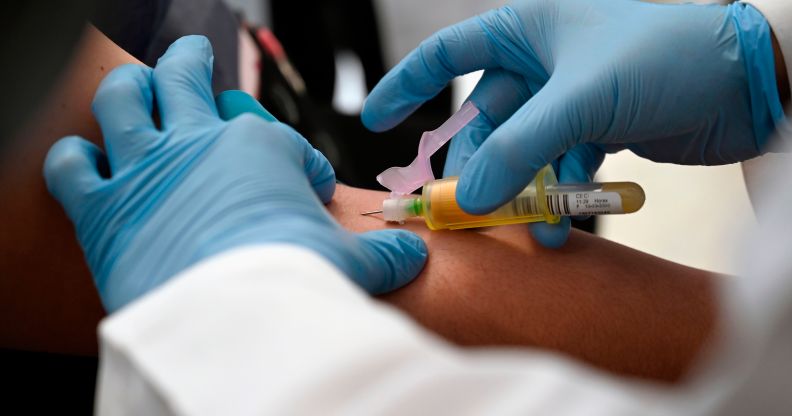Scientists have discovered a new strain of HIV for the first time in nearly two decades

Testing for HIV is quick and easy (Getty)
Researchers have said “there’s no reason to panic” about the discovery of an “outlier” HIV strain.
The subtype is the first to be officially discovered since guidelines for classifying HIV subtypes were published in 2000, and has taken experts several years to pinpoint.
The first two examples of the new strain were discovered in the Democratic Republic of Congo in 1983 and 1990.
But in order for scientists to declare it officially, a third case was needed. This was found in 2001, but to be sure that it matched the first two samples, scientists at Abbott Laboratories and the University of Missouri had to develop new methods to test the whole genome.
Mary Rogers, co-author of a report published Wednesday in the Journal of Acquired Immune Deficiency Syndromes, said it was “like searching for a needle in a haystack” and then “pulling the needle out with a magnet”.
Little is known about how Subtype L, as it has been named, might affect people differently to any other strain.
There’s no reason to worry about it a little bit.
“There’s no reason to panic or even to worry about it a little bit,” Anthony Fauci, the director of the National Institute of Allergy and Infectious Diseases, told CNN.
“Not a lot of people are infected with this. This is an outlier.”
There are two types of HIV. The first, HIV-1, has four versions – Groups M, N, O and P. Group M is responsible for most HIV cases worldwide, and it is this version that Subtype L is related to. There is also HIV-2, which is relatively rare.
Scientists look for new HIV strains so that they can be accurately detected.
Rogers, principal scientist at Abbott, said that it is important to look for new strains so that “we can accurately detect it, no matter where it happens to be in the world”.
Abbott tests more than 60 per cent of the world’s blood supply, she added.
Dr Carole McArthur, the study’s co-author, said that the discovery “reminds us that to end the HIV pandemic, we must continue to out think this continuously changing virus and use the latest advancements in technology and resources to monitor its evolution”.
According to CNN, current HIV treatments are designed to fight a wide variety of strains, and it is believed that they will be able to combat this newly-discovered one.
According to UNAIDS, 37.9 million people in the world are living with HIV, 61 per cent (23.2m) of whom are being treated with antiretroviral therapy (ART).
The body has set a 90-90-90 target for 2020, which calls for 90 percent of all people living with HIV to know their status, 90 percent of all people diagnosed with HIV to receive ART, and 90 percent of all people on ART to have an undetectable (and therefore untrasmittable) viral load.

